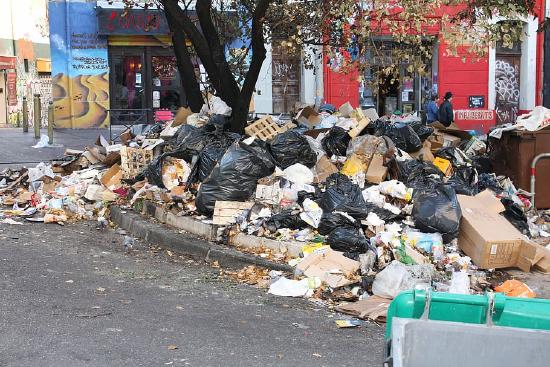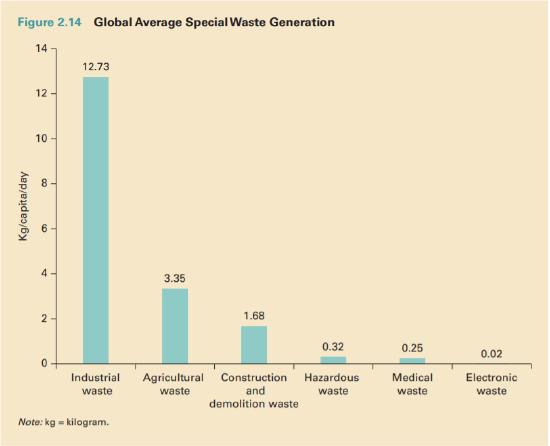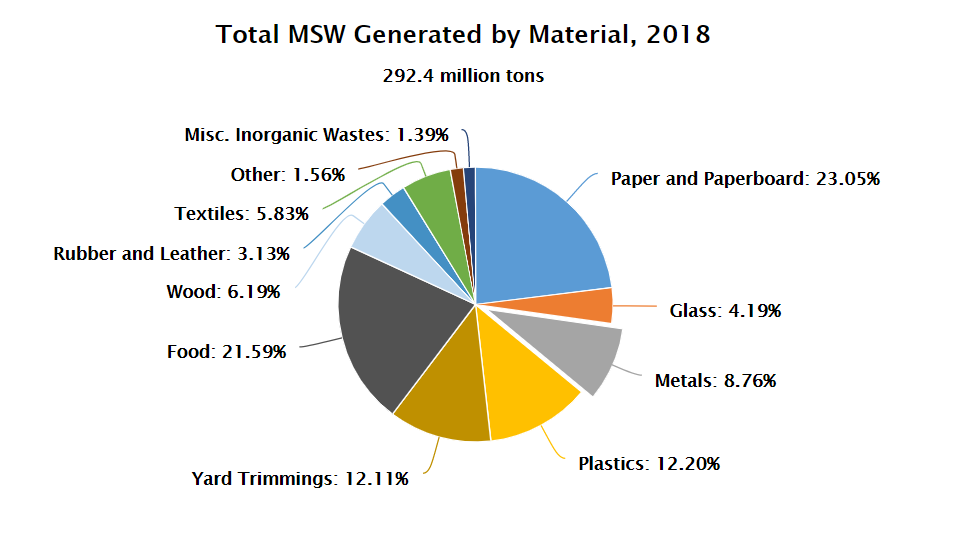13.1: Waste Generation
- Page ID
- 86791
INTRODUCTION
In natural systems, there is no such thing as waste. Everything flows in a natural cycle of use and reuse. Living organisms consume materials and eventually return them to the environment, usually in a different form, for reuse. Solid waste (or trash) is a human concept. It refers to a variety of discarded materials, not liquid or gas, that are deemed useless or worthless (figure \(\PageIndex{a}\)). Humans modify natural substances, making them more difficult to breakdown, or store matter under conditions that slow its degradation. However, what is worthless to one person may be of value to someone else, and solid wastes can be considered misplaced resources. Learning effective ways to reduce the amount of wastes produced and to recycle valuable resources contained in the wastes is important if humans wish to maintain a livable and sustainable environment.

Figure \(\PageIndex{a}\): Trash is a uniquely human concept. Image by Piqsels (public domain).
Solid waste disposal has been an issue facing humans since they began living together in large, permanent settlements. With the migration of people to urban settings, the volume of solid waste in concentrated areas greatly increased.
Ancient cultures dealt with waste disposal in various ways: they dumped it outside their settlements, incorporated some of it into flooring and building materials, and recycled some of it. Dumping and/or burning solid waste has been a standard practice over the centuries. Most communities in the United States dumped or burned their trash until the 1960s, when the Solid Waste Disposal Act of 1965 (part of the Clean Air Act) required environmentally sound disposal of waste materials.
SOURCES AND TYPES OF SOLID WASTE
There are two basic sources of solid wastes: non-municipal and municipal. Non-municipal solid waste is the discarded solid material from industry, agriculture, mining, and oil and gas production. It makes up almost 99 percent of all the waste in the United States. Some common items that are classified as non-municipal waste are: construction materials (roofing shingles, electrical fixtures, bricks); waste-water sludge; incinerator residues; ash; scrubber sludge; oil/gas/mining waste; railroad ties, and pesticide containers.
Municipal solid waste is made up of discarded solid materials from residences, businesses, and city buildings. It makes up a small percentage of waste in the United States, only a little more than one percent of the total. Municipal solid waste consists of materials from plastics to food scraps. The most common waste product is paper (about 40 percent of the total).
Other common components are: yard waste (green waste), plastics, metals, wood, glass and food waste. The composition of the municipal wastes can vary from region to region and from season to season. Food waste, which includes animal and vegetable wastes resulting from the preparation and consumption of food, is commonly known as garbage.
Types of Waste
There are many subcategories of waste (figure \(\PageIndex{b}\)). Biodegradable waste can be broken down by microbes whereas nondegradable waste does not readily break down. Hazardous waste is trash that presents a health risk. Specifically, hazardous wastes are defined as materials which are toxic, carcinogenic (cause cancer), mutagenic (cause DNA mutations), teratogenic (cause birth defects), highly flammable, corrosive, or explosive. Examples include batteries, fluorescent lights, various cleaners, and e-waste, which arises from discarded electronics. Precious metals can be extracted and recycled from hazardous waste, but it must be done safely.

Figure \(\PageIndex{b}\): Plastic cutlery is nondegradable, but these spoons and forks and made of wood, a biodegradable material. Image by BRRT/Pixabay (Pixabay license).
Interactive Element
How do you dispose of household hazardous wastes? Check Earth 911 for disposal sites near you.
Solid Waste Sources and Composition
Agriculture and industry generate most of the waste globally followed by mining (figure \(\PageIndex{c}\)). Together, these generate non-municipal solid waste. Some common items that are classified as non-municipal waste are: construction materials (roofing shingles, electrical fixtures, bricks); waste-water sludge; incinerator residues; ash; scrubber sludge; oil/gas/mining waste; railroad ties, and pesticide containers. The remaining waste, municipal solid waste (MSW), is made up of discarded solid materials from residences, businesses, and city buildings. Globally, waste generated from industry generated was nearly 18 times that of MSW, and waste generated from agriculture was more than 4.5 times that of MSW.

Figure \(\PageIndex{c}\): Global average special waste generation showing selected categories of waste in kilograms (kg) per person (capita) per day. 1 kg = 2.2 lbs. In order of greatest to least waste generation is industrial waste (12.73 kg/capita/day), agricultural waste (3.35), construction and demolition waste (1.68), hazardous waste (0.32), medical waste (0.25), and electronic waste (0.02). Image from What a Waste 2.0 : A Global Snapshot of Solid Waste Management to 2050 (CC-BY)
The world generates 2.21 billion tons of municipal solid waste annually. Municipal solid waste makes up 3-9% of all waste in the U.S., and 292.4 million tons were generated in U.S. in 2018 (4.9 lbs per person per day). This contrasts with average values in Sub-Saharan Africa (1.01 lbs per person per day), South Asia (1.15 lbs per person per day), and East Asia and the Pacific (1.23 lbs per person per day). Daily waste generation per person in high income countries is projected to increase by 19 percent by 2050, compared to low- and middle-income countries where it is anticipated to increase by approximately 40 percent or more.
Municipal solid waste consists of materials from plastics to food scraps. The most common waste product is paper (about 23% of the total; figure \(\PageIndex{d}\)). Other common components are yard waste (green waste), plastics, metals, wood, glass and food waste. The composition of the municipal wastes can vary from region to region and from season to season.

Figure \(\PageIndex{d}\): Composition of municipal solid waste (MSW) in the U.S. in 2018 before recycling. Paper and paperboard comprise 23.05% followed by food (21.59%), plastics (12.20%), yard trimmings (12.11%), metals (8.76%), wood (6.19%), textiles (5.83%), glass (4.19%), rubber and leather (3.13%), other (1.56%), and miscellaneous inorganic waste (1.39%). Image from EPA (public domain).
Attribution
Modified by Melissa Ha from the following sources:
- Systems of Waste Management from Sustainability: A Comprehensive Foundation by Tom Theis and Jonathan Tomkin, Editors (CC-BY). Download for free at CNX.
- Solid Waste form AP Environmental Science by University of California College Prep (CC-BY). Download for free at CNX.
- Kaza, Silpa; Yao, Lisa C.; Bhada-Tata, Perinaz; Van Woerden, Frank. 2018. What a Waste 2.0 : A Global Snapshot of Solid Waste Management to 2050. Urban Development;. Washington, DC: World Bank. © World Bank. (CC-BY)


